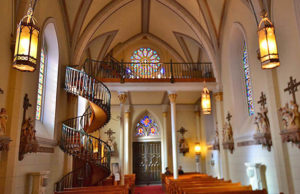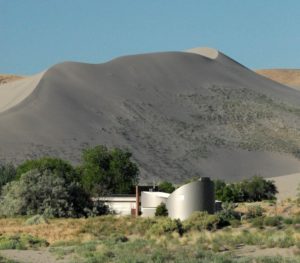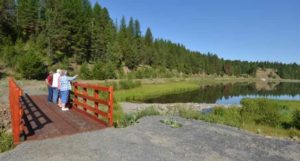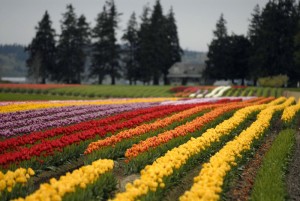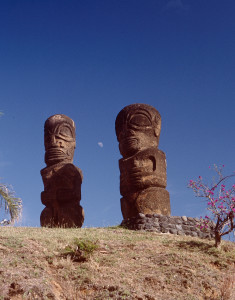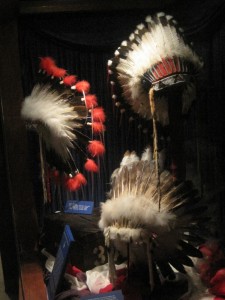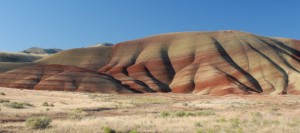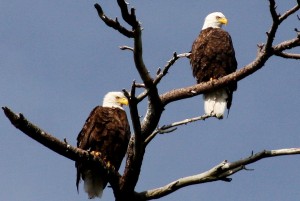
Photo by Dana Moos
One of Washington’s most spectacular attractions is the wintering population of bald eagles along the Skagit River. Bald eagles, migrating from British Columbia, Alaska and the interior Northwest, come to the Skagit to feed on spawned chum salmon. Their haunting, creaking cackle splits the air as they go about the business of hunting for their food of prey.
The Skagit Eagle Festival is a month-long celebration during eagle-watching season in eastern Skagit County. Activities take place in Concrete, Rockport and Marblemount every full weekend in January. The Festival is devoted to public education on the bald eagle, as well as environmental and wildlife conservation.
The festival features a variety of free tours, walks, and educational programs where visitors will learn not only about these majestic birds, but also about a variety of wildlife and the beautiful areas along the Skagit River where eagles live or return each year. Festival attendees may also enjoy arts & crafts, wine tasting, river rafting, music and dance, plus additional indoor and outdoor activities.
Opportunities abound to view or photograph our majestic national symbol as they congregate along the banks of the Skagit River, typically between December through February. Eastern Skagit County offers one of the largest wintering Bald Eagle populations in the lower 48 states. Peak counts have been estimated at more than 500 birds.
For viewing by land, the Bald Eagle Festival committee recommends parking in the pullouts on Highway 20 at Mileposts 99 and 100. (Avoid parking on narrow highway shoulders which could obstruct highway traffic.) Howard Miller Steelhead Park in Rockport also offers good eagle viewing.
If you would prefer viewing the eagles from the river, private raft companies with certified guides offer float trips on the Skagit and other rivers.
The North American colonists originally gave the bald eagle its name when “bald” or “balled” meant white. Bald eagles feed mostly on fish or seabirds, though they may scavenge larger animals such as deer and even whale carrion.
For its size, the eagle is surprisingly light, yet it is very strong, strong enough to swoop down on prey with incredible speed and carry it away. Eagles’ powerful wings allow them to carry prey that weighs more than they do.
Bald eagle nests, which can weigh hundreds of pounds, are typically six feet wide and two or four feet tall. Nests are often located very high in tall trees with broken or deformed tops, with a view of the water.
The nesting period in Washington begins around the last week of March to the first or second week of April. Although some eagles stay in the Upper Skagit River area, most find nesting sites around the shores of Puget Sound, San Juan Islands, or other coastal areas in Canada or Alaska.
The average adult bald eagle weighs nine pounds, with a height of three feet and a wing span of five-and-one–half to seven-and-one-half feet. It is presumed that eagles mate for life. They are generally ready to mate at the age of five. Females lay two to four eggs and the thirty-five day incubation duties are shared by both female and male.
Eaglets are fed by their parents for the first ten to twelve weeks and then sporadically while they learn to feed themselves. By the time young eagles emerge from the nest they are almost as large as their parents. The familiar coloring of white head and tail, however, does not occur until the birds are four or five years of age. Juvenile birds are mostly brown and gray with mottling on the underside of their wings and a black tail with some gray.
The average life span of an eagle is up to twenty years in the wild and forty years in captivity. The bald eagle was almost driven to extinction as the result of eggshell thinning caused by the pesticide DDT. DDT was banned in the 1970s and the eagles, as well as other birds of prey, have made an amazing comeback.
Having “eagle eyes” is a popular expression for someone who can see great distances. Few animals can match the eagles’ ability to see distant objects; in fact, the eagle can see tiny details three to four times farther than humans.
Eagles normally can be seen feeding on the gravel bars of the Skagit River during the morning hours between 7 am and 11 am. Or, later in the afternoon, you can watch the birds catch updrafts and soar overhead. At other times the birds are seen sitting on mossy tree branches along the river. This “quiet time” is an important period when the birds conserve energy.
The American bald eagle is protected by Federal law. Follow these tips for your eagle viewing pleasure and for the protection of these magnificent birds:
● To avoid disturbing eagle feeding periods, boats should not be launched before 11:00 a.m.
● On land, confine eagle viewing to the designated look-out points along Highway 20.
● Your car makes a great viewing blind. You will minimize disturbance to the eagles and you may see more wildlife by staying in your car.
● Maintain a 1,000 foot distance from eagles.
● Do not trespass on private property.
● Keep pets in your vehicle
● Move slowly, talk softly.
● Never throw objects to make the eagles fly.
● Use telescope, spotting scope, binoculars or a telephoto lens to see eagles “up close.”
● Dress warmly and prepare your vehicle for winter weather. Winter months in the foothills of the Cascades often bring cold rain or snow.
For additional information and for a full schedule of events, visit http://concrete-wa.com/skagit-eagle-festival-2016 or call 360-853-8784 or 360-853-8767. The Concrete Chamber of Commerce invites you to visit them at the East County Resource Center, 45770 Main St., Concrete, WA 98237
Note: the North Cascades Highway, which goes through the mountains to Winthrop, is closed every winter, but the road to Concrete is ALWAYS open.


